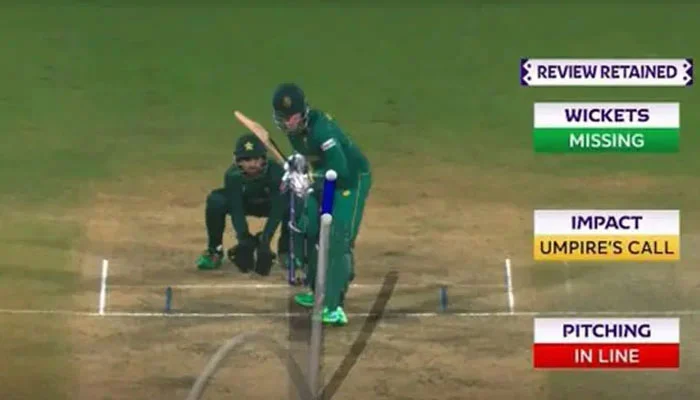The International Cricket Council (ICC) issued a clarification on the controversial Decision Review System (DRS) moment during the World Cup 2023 match between Pakistan and South Africa and termed the incident as an “erroneous display of graphics”.
A day earlier, Pakistan suffered their fourth consecutive defeat in the World Cup as Proteas successfully chased down Green Shirts’ 271-run target significantly diminishing Pakistan’s chances of proceeding in the mega-event’s semi-finals.
During the match, Proteas batter Rassie van der Dussen reviewed the lbw decision after being declared out by the on-field umpire. Initially, the ball tracking showed impact to be the “umpire’s call” and the wicket to be “missing”. The graphics were then immediately replaced by a new ball tracking showing “umpires call” for both impact and wickets.
“In today’s match between South Africa and Pakistan, an incomplete graphic was erroneously displayed during the LBW review of Rassie van der Dussen,” an ICC spokesperson said.
“The completed graphic with the right details was ultimately displayed,” he added. It must be noted that later in the game, another controversial decision took place which changed the outcome of the game in favour of South Africa.
On the last ball of the 46th over with South Africa needing 8 runs to win, Haris Rauf’s delivery pitched on a length and struck Tabraiz Shamsi on the front foot, leaving a substantial gap between the bat and the pad. The on-field gave a not-out.
The Men in Green opted for a DRS referral. The ball tracking system was called into action, revealing that the impact was in line with the stumps, although the ball had pitched outside off and just grazed the leg stump.
As a result, the on-field umpire’s decision was upheld, allowing the batter to survive and carry South Africa to their fifth win, thanks to Keshav Maharaj’s crucial contribution.—AFP










